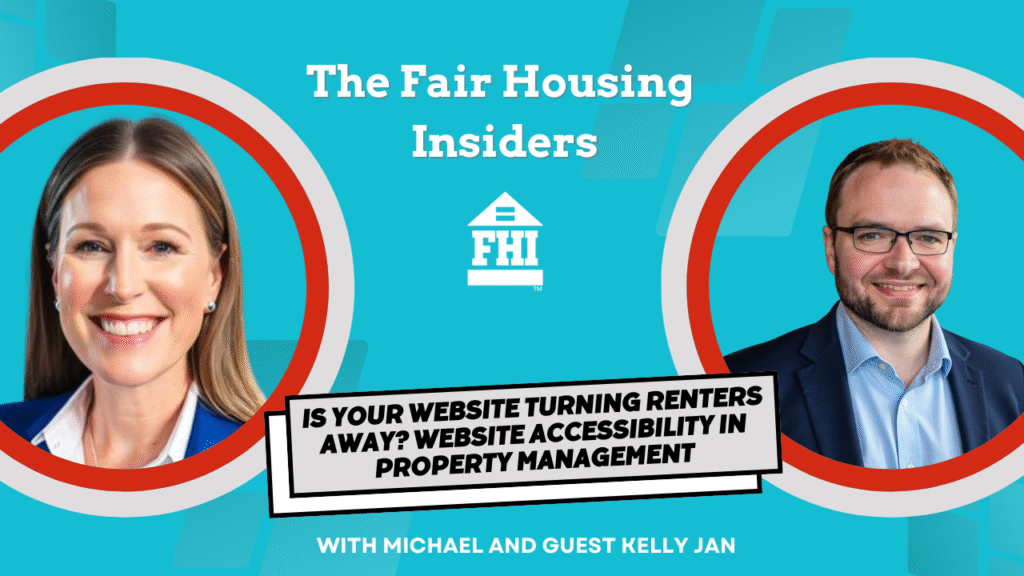When people think of accessibility, they often picture ramps, elevators, or wider doorways, but did you know that website accessibility is just as important? Your website is often the first point of contact for prospective residents, and if it isn’t inclusive, you may unintentionally be closing the door on individuals with disabilities.
For property managers and housing providers, digital accessibility isn’t just a best practice; it’s a legal requirement. Under the Americans with Disabilities Act (ADA), specifically Title II, websites must be accessible to people with disabilities. Overlooking this responsibility can lead to compliance issues, resident complaints, or even claims of discrimination.

Table of Contents
Why Website Accessibility Matters
Housing providers frequently rely on websites to share important information, showcase units, collect applications, and even accept payments. For residents with visual, cognitive, or mobility-related disabilities, an inaccessible website can prevent them from completing these essential tasks.
Failing to provide equal access in a digital environment is more than an inconvenience; it’s a form of discrimination. Just as the Fair Housing Act requires reasonable accommodations in housing, the ADA requires digital spaces to be inclusive.
Common Accessibility Pitfalls
Many housing websites unintentionally create barriers that make it difficult, or even impossible, for residents with disabilities to engage. One frequent problem is missing alt text on images. Since most housing websites are highly image-driven, this can create major obstacles for people who use screen readers. Instead of hearing a useful description such as “living room with couch and lamp,” the resident may only hear the default file name, which provides no meaningful information.
Another common issue is inaccessible forms. Rental applications, eligibility checklists, and online payment systems are often uploaded in formats that screen readers cannot interpret. When these documents aren’t formatted correctly, they effectively block residents from participating in housing opportunities.
Finally, many teams treat accessibility as a one-time project rather than an ongoing responsibility. Each time new content is added to a website, whether it’s an image, a form, or a document, it must be uploaded with accessibility in mind. Without consistent attention, even a well-designed website can quickly fall out of compliance.
First Steps Toward Compliance
The good news is that making progress doesn’t always require a complete website overhaul. A smart starting point is to request a site scan from an accessibility organization, which can identify missing image descriptions, broken links, or noncompliant PDFs. From there, property management teams can begin correcting issues with step-by-step guidance.
It’s also important for staff to learn the basics of digital accessibility. Free resources and training videos are widely available, covering topics such as uploading accessible PDFs, selecting compliant colors and fonts, and ensuring that images are properly tagged. By building awareness across your team, accessibility can become a natural part of everyday operations rather than an afterthought.
Building Accessibility Into Your Operations
Just like fair housing compliance, accessibility should never be treated as a one-time fix. It must become part of your ongoing strategy. Incorporating accessibility checks into your routine updates not only reduces legal risk but also improves the experience for all residents.
In the end, accessibility isn’t just about compliance; it’s about inclusivity, fairness, and extending housing opportunities to everyone. By taking even small steps now, property management professionals can strengthen their communities, avoid costly mistakes, and ensure that no resident is turned away because of an avoidable digital barrier.
You may also like:
- A Year of Upheaval: How 2025 Impacted Fair Housing Operations
- When Should You Involve a Fair Housing Attorney?
- Holiday Guests, Assistance Animals, and Fair Housing—Are You Ready?
- Decorations, Parties & Compliance: Holiday Fair Housing Tips
- The Fair Housing Guide Part 2: Employee Responsibility Defined
